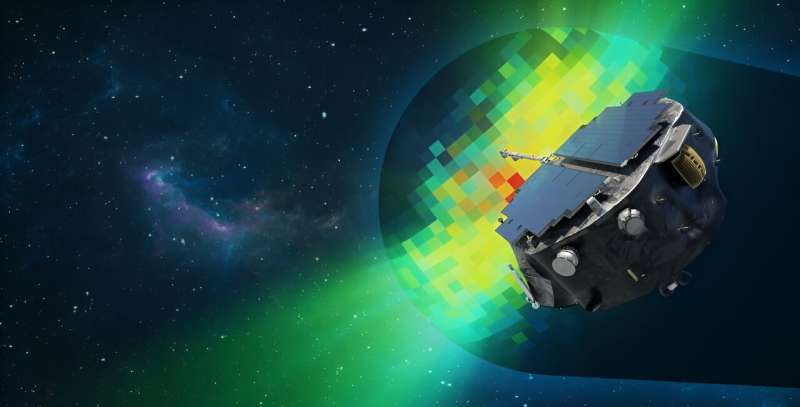The mission will map the boundaries of the heliosphere—the electromagnetic bubble surrounding and protecting our solar system—and help researchers better understand the boundary of the heliosphere. This region is where the constant flow of particles from our sun, called the solar wind, collides with material from the rest of the galaxy. This collision limits the amount of harmful cosmic radiation entering the heliosphere.
It will also help settle the debate on the actual shape of the heliosphere. A study in 2020, using data from several spacecraft, suggested that the sun's bubble of influence may be a deflated croissant shape, rather than the long-tailed comet shape that has previously been
The spacecraft will be positioned about 1.5 million km (1 million miles) from Earth and will collect and analyze particles that make it through to help chart and understand the range of particles in interplanetary space.
The milestone the IMAP mission recently met is called Key Decision Point D, which allows the mission to move from development and design to the testing and integration phase. The targeted launch date was moved back one months, from late April to May 2025 to ensure that the project team has the adequate resources to "address risks and technical complexities during system integration and testing," NASA said in a recent mission blog post.
The spacecraft is currently being assembled inside the clean room at the Johns Hopkins Applied Physics Lab in Laurel, Maryland. There is a live, 24-hour feed where you can watch the assembly, integration, and testing.
During the next few months, engineers will install the electronics, communications systems, thermal systems, propulsion, batteries, and many more complex systems to make the spacecraft work. Additionally, all 10 of IMAP's instruments will soon start to arrive from around the world and be integrated with the spacecraft one by one. Finally, the spacecraft will begin testing before being sent to NASA's Goddard Space Flight Center for final testing prior to launch.
Provided by Universe Today



